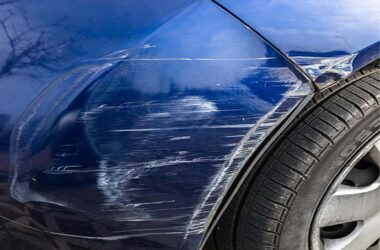Tires are essential to the efficiency, performance, and safety of a car. Tread depth is one of the most crucial elements among the many elements that affect a tire’s performance. In addition to guaranteeing safe driving conditions, properly managing tire tread depth will help your tires last longer. Parts of good car ownership include understanding when to change your tires and why tread depth matters.
The Value of Depth of Foot
The vertical distance measured between the top of the tire’s rubber and the tread’s deepest grooves is referred to as tread depth. This is important for a number of reasons. First of all, tires with sufficient tread depth provide superior grip on a variety of terrain, such as icy, snowy, or rainy roadways. The possibility of hydroplaning is decreased by the tread’s grooves, which direct water away from the tire. The tire’s capacity to grip the road is reduced when the tread depth is inadequate, which greatly raises the risk of an accident.
How Much Tread is in a Foot?
Tire tread depth may be easily measured using a variety of techniques. The penny test, which involves inserting a coin into the tread with Lincoln’s head pointing down, is a popular method. It’s time to think about changing your tires if the tread level is too shallow and you can see the top of Lincoln’s head. A tread depth gauge, which gives an exact reading in millimetres, may be utilized for a more accurate measurement. While most places have a legal minimum tread depth of 1.6mm, new tires often have a tread depth of roughly 10–12mm.
Signs of deteriorated tires
Apart from routinely checking the tread level, there are a few indicators that your tires may need to be replaced. Uneven wear patterns on tires might be a sign of alignment problems. It is essential to get your tires rotated and your wheels aligned if you see that one side of the tread is wearing down more rapidly than the other. The Auto Repair in Essex, MD service can help you in this matter.
Impacts on Fuel Efficiency and Performance
The performance and fuel economy of your car are also impacted by the tread depth of your tires. Low tread depth tires may increase rolling resistance, which can put more strain on your engine. This may ultimately result in less fuel efficiency, which can be expensive.
When to Get New Tires
Maintaining performance and safety requires knowing when to change your tires. Generally speaking, you should change your tires as soon as they reach the 1.6mm legal tread depth limit. Nonetheless, a lot of professionals advise changing tires when the tread depth reaches around 3 mm, particularly in winter or during wet seasons. The condition of the tires, driving style, and weather all affect when to change them. Always refer to the handbook for your car and think about getting tire advice from a specialist.







